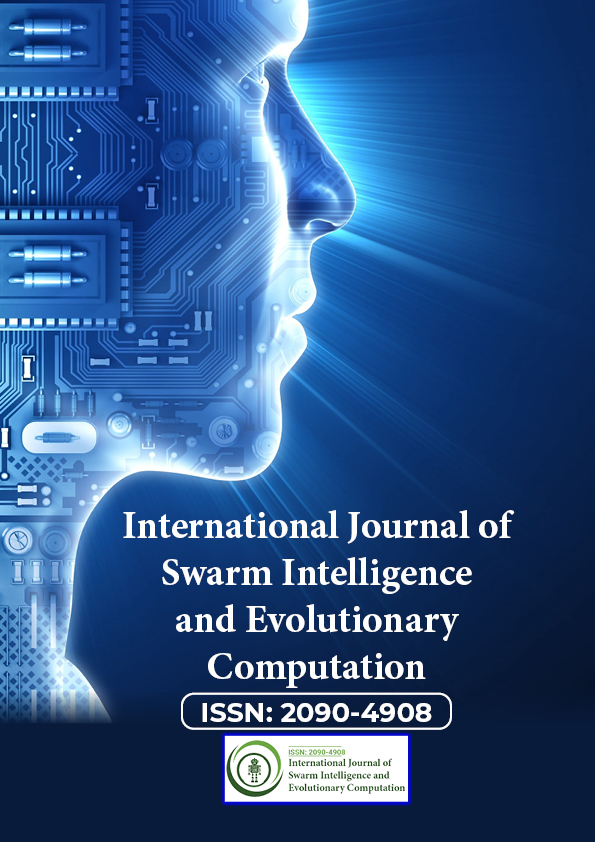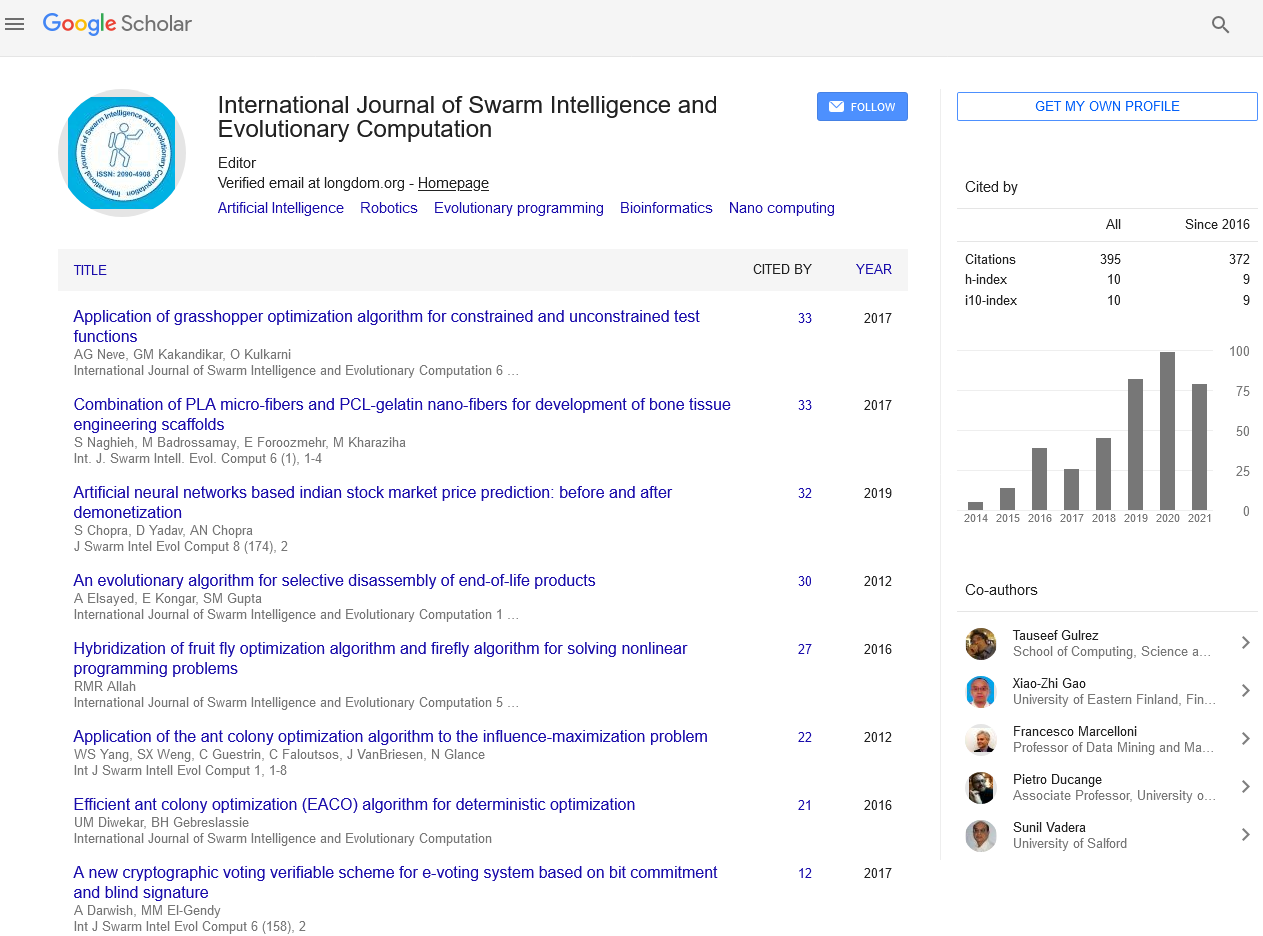Indexed In
- Genamics JournalSeek
- RefSeek
- Hamdard University
- EBSCO A-Z
- OCLC- WorldCat
- Publons
- Euro Pub
- Google Scholar
Useful Links
Share This Page
Journal Flyer

Open Access Journals
- Agri and Aquaculture
- Biochemistry
- Bioinformatics & Systems Biology
- Business & Management
- Chemistry
- Clinical Sciences
- Engineering
- Food & Nutrition
- General Science
- Genetics & Molecular Biology
- Immunology & Microbiology
- Medical Sciences
- Neuroscience & Psychology
- Nursing & Health Care
- Pharmaceutical Sciences
Opinion Article - (2024) Volume 13, Issue 3
Grid Computing in Action: Applications and Advancements in Distributed Computing
Samuel Reece*Received: 26-Apr-2024, Manuscript No. SIEC-24-25860; Editor assigned: 29-Apr-2024, Pre QC No. SIEC-24-25860 (PQ); Reviewed: 14-May-2024, QC No. SIEC-24-25860; Revised: 21-May-2024, Manuscript No. SIEC-24-25860 (R); Published: 29-May-2024, DOI: 10.35248/2090-4908.24.13.376
Description
Grid computing represents a transformative approach to solving complex computational problems by enhancing a distributed network of resources. This pattern integrates computing power, storage, and data resources across multiple locations, enabling the execution of large-scale, resource-intensive tasks. Grid computing facilitates collaboration, enhances computational efficiency, and supports a wide range of applications, from scientific research to commercial enterprises.
Principles of grid computing
At its core, grid computing is founded on several key principles that distinguish it from traditional computing models:
Resource sharing: Grid computing enables the sharing of computational resources, including processors, memory, storage, and data, across multiple administrative domains. This sharing maximizes resource utilization and minimizes redundancy.
Scalability: Grid systems are designed to scale seamlessly, accommodating an increasing number of resources and users without significant degradation in performance. This scalability is important for handling large datasets and complex computations.
Heterogeneity: Grid computing integrates diverse resources with varying hardware, operating systems, and software configurations. This heterogeneity enhances the system's flexibility and adaptability to different types of tasks.
Geographical distribution: Resources in a grid computing environment are often geographically dispersed, enabling collaboration across different locations and institutions. This distribution supports the pooling of global resources for common goals.
Autonomy: Grid resources operate autonomously, with local administrative control over individual components. This autonomy allows for decentralized management and coordination of resources.
Architecture of grid computing
The architecture of grid computing involves several layers and components that work together to provide a cohesive and efficient computational environment:
Fabric layer: The fabric layer comprises the physical resources, including computers, storage systems, and networks. These resources form the foundation of the grid infrastructure.
Connectivity layer: The connectivity layer ensures secure and reliable communication between distributed resources. It includes protocols and services for authentication, authorization, and data transfer.
Resource layer: This layer is responsible for managing and allocating resources within the grid. It includes services for resource discovery, scheduling, and load balancing to optimize resource utilization.
Collective layer: The collective layer coordinates interactions among multiple resources and users. It provides services for task distribution, workflow management, and collaborative computing.
Application layer: The application layer interfaces with endusers, providing tools and environments for developing and executing grid-enabled applications. It supports a wide range of applications, from scientific simulations to data analysis.
Applications of grid computing
Grid computing has broad applications across various domains, demonstrating its versatility and impact:
Scientific research: Grid computing accelerates scientific discoveries by enabling large-scale simulations, data analysis, and collaborative research. It supports projects in fields such as physics, biology, and climate science, where complex models and vast datasets are common.
Healthcare: In healthcare, grid computing facilitates the analysis of medical data, supporting tasks such as genomic sequencing, drug discovery, and disease modeling. It enhances research capabilities and clinical decision-making.
Financial services: Financial institutions use grid computing to perform risk analysis, portfolio management, and real-time trading. The ability to process large volumes of financial data quickly and accurately is important for competitive advantage.
Entertainment: The entertainment industry enhances grid computing for rendering complex animations, special effects, and virtual reality applications. This capability reduces production times and costs while enhancing creative possibilities.
Disaster management: Grid computing supports disaster management efforts by enabling the analysis of environmental data, modeling disaster scenarios, and coordinating response efforts. It enhances the ability to predict, prepare for, and respond to natural and man-made disasters.
Challenges and future directions
Despite its advantages, grid computing faces several challenges that need to be addressed to realize its full potential:
Security: Ensuring the security and privacy of data in a distributed environment is a significant concern. Strong security mechanisms are required to protect sensitive information and prevent unauthorized access.
Interoperability: Integrating heterogeneous resources and systems requires standardization and interoperability frameworks. Developing common protocols and interfaces is essential for seamless resource sharing.
Resource management: Efficiently managing and scheduling resources in a dynamic and distributed environment is complex. Advanced algorithms and strategies are needed to optimize resource allocation and minimize contention.
Energy efficiency: The energy consumption of grid computing systems is substantial. Research into energy-efficient computing and resource management techniques is important for sustainable grid operations.
Conclusion
Grid computing represents a powerful model for controlling distributed resources to solve complex computational problems. Its principles of resource sharing, scalability, heterogeneity, geographical distribution, and autonomy enable enhanced computational power and collaboration across various domains. As technology advances, grid computing will continue to evolve, addressing challenges related to security, interoperability, resource management, and energy efficiency. Through ongoing innovation and development, grid computing will play a pivotal role in advancing scientific research, healthcare, financial services, entertainment, and disaster management, shaping the future of computational science and technology.
Citation: Reece S (2024) Grid Computing in Action: Applications and Advancements in Distributed Computing. Int J Swarm Evol Comput. 13:376.
Copyright: © 2024 Reece S. This is an open-access article distributed under the terms of the Creative Commons Attribution License, which permits unrestricted use, distribution, and reproduction in any medium, provided the original author and source are credited.


